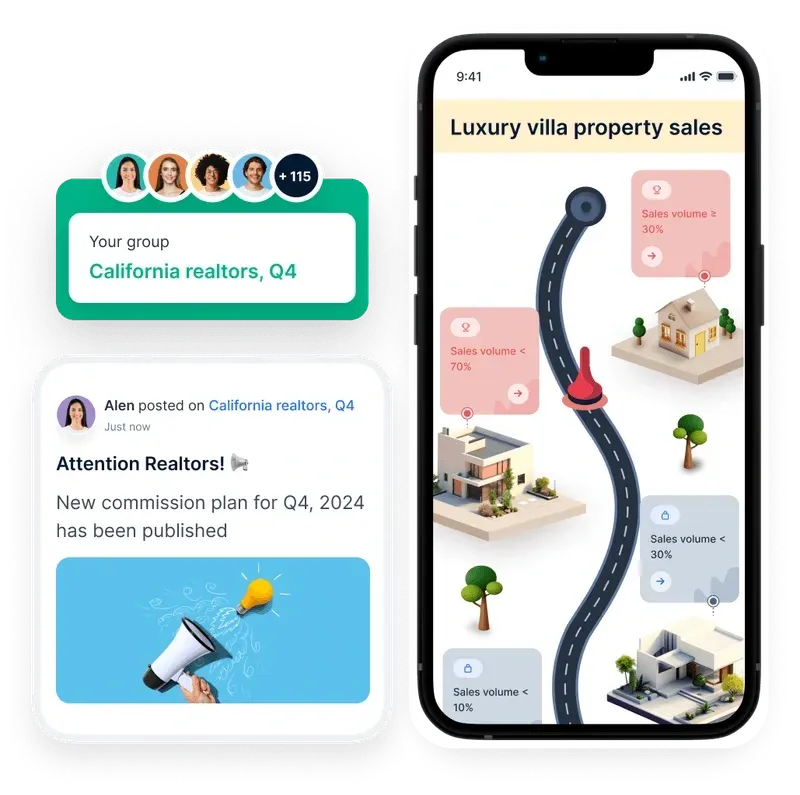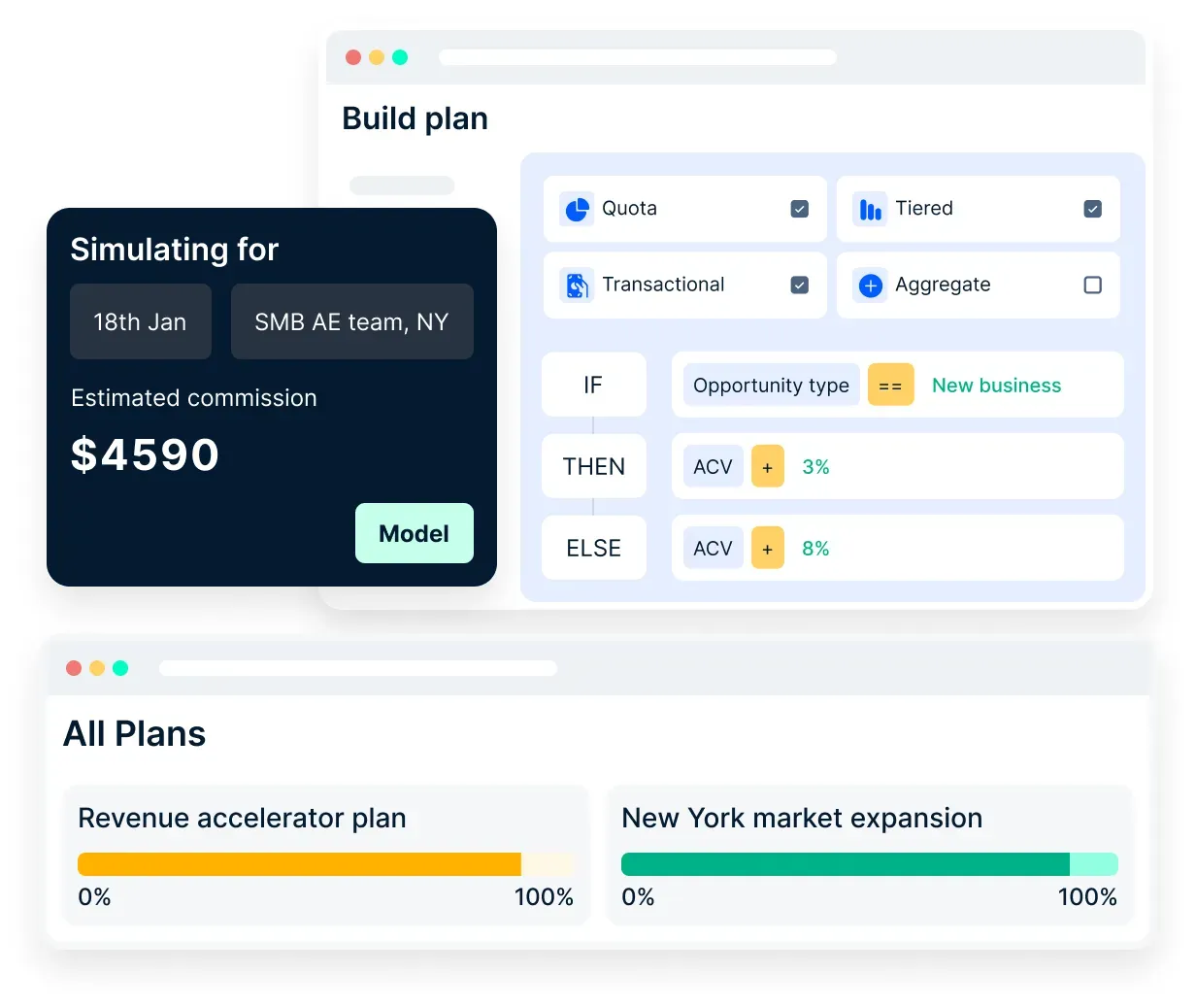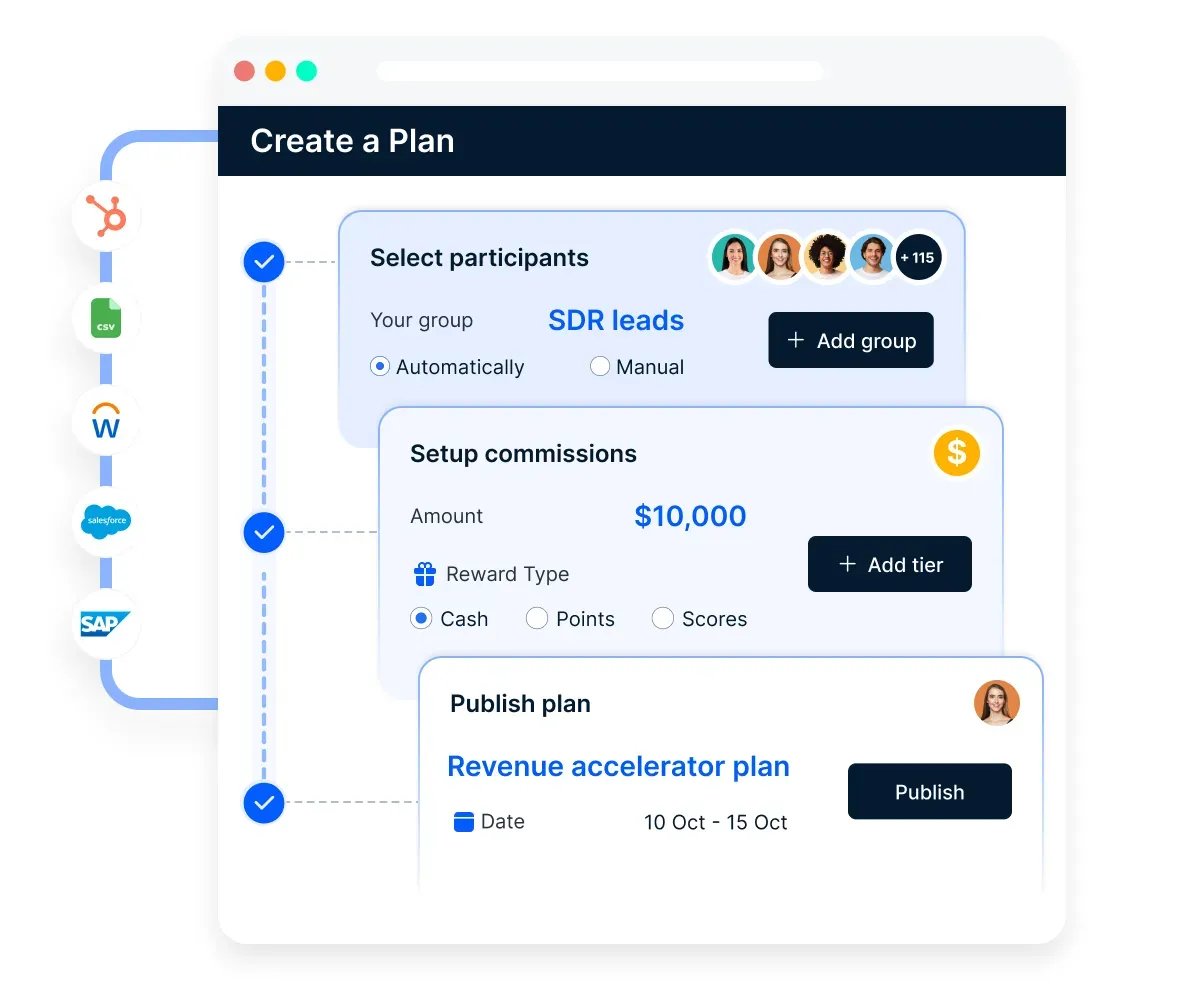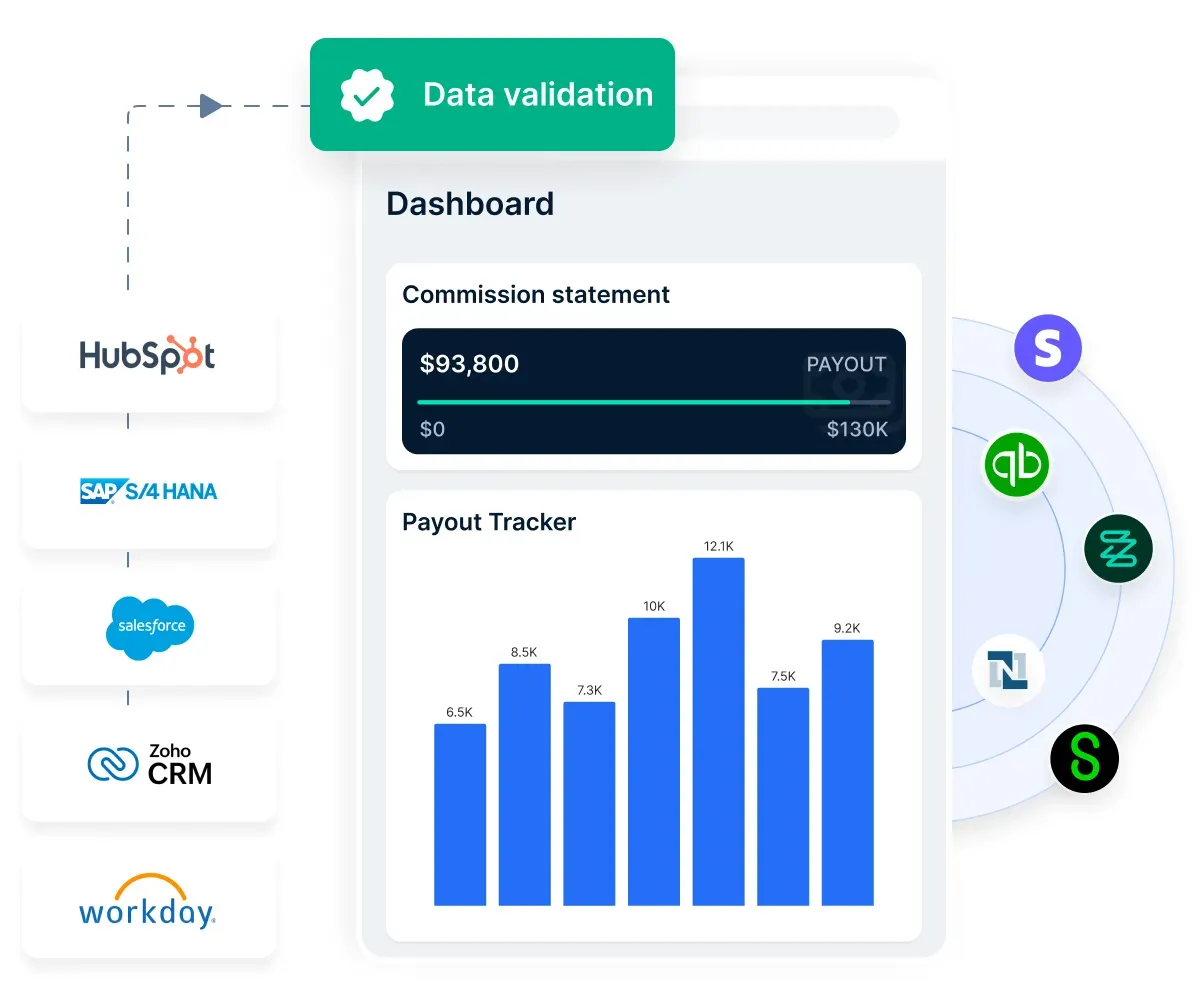12 stratégies de gestion du cycle de vente pour optimiser le processus de vente
Stratégies de gestion du cycle de vente pour optimiser votre processus de vente, augmenter l'efficacité et favoriser la croissance du chiffre d'affaires. Améliorez les performances de votre équipe de vente et concluez des affaires plus efficacement.
Sur cette page
Une stratégie de vente réussie ne repose pas sur des suppositions ou des tactiques aléatoires. Elle nécessite au contraire une approche structurée, qui guide votre équipe à chaque étape du parcours client. C'est là que la gestion du cycle de vente joue un rôle crucial.
La gestion du cycle de vente permet de gérer et d'optimiser efficacement les étapes de conversion des prospects en clients payants. Elle consiste en diverses stratégies et techniques visant à rationaliser les ventes, à établir des relations solides et à conclure des affaires.
Dans cet article, nous allons explorer 12 stratégies efficaces de gestion du cycle de vente qui peuvent aider les entreprises à augmenter leur chiffre d'affaires et à améliorer la satisfaction de leurs clients.
Qu'est-ce que la gestion du cycle de vente ?
La gestion du cycle de vente joue un rôle crucial en aidant les professionnels de la vente, les responsables et les dirigeants à contrôler chaque étape du processus de vente. En analysant les tendances, ils peuvent évaluer les aspects qui fonctionnent bien et identifier les domaines à améliorer.
Pour les vendeurs et les responsables commerciaux, une gestion efficace du cycle de vente fournit une approche structurée de l'évaluation de chaque phase du cycle de vente. Cela permet de s'assurer que les ajustements nécessaires peuvent être faits pour améliorer l'efficacité et obtenir de meilleurs résultats. L'utilisation d'outils tels qu'un CRM simplifie le processus, rendant la gestion du processus de vente plus rationnelle et axée sur les données.
Chaque vendeur s'appuie sur un cycle de vente bien défini pour guider ses activités quotidiennes. La connaissance de ce cycle permet aux équipes de rester concentrées et adaptables, ce qui les aide à relever les défis de la vente avec confiance et clarté.
12 Stratégies efficaces de gestion du cycle de vente
Voici des stratégies efficaces de gestion du cycle de vente.
1. Définir le public cible et le profil du client idéal
Avant de se lancer dans des efforts de vente, il est essentiel de définir votre public cible et de créer un profil du client idéal.
Comprendre les points de douleur et les préférences de vos clients potentiels vous permet d'adapter votre approche commerciale en conséquence. Cette approche ciblée vous permet d'investir votre temps et vos ressources dans les prospects les plus susceptibles de devenir des clients fidèles.
2. Qualification des prospects
Une qualification efficace des prospects est essentielle pour une gestion efficace du cycle de vente. Développez une approche systématique de la qualification des prospects sur la base de critères spécifiques tels que le budget, l'autorité, le besoin et le calendrier.
Cela vous permet de concentrer vos efforts sur les prospects ayant le plus fort potentiel de conversion, et d'économiser du temps et des ressources qui seraient autrement gaspillés sur des prospects non qualifiés. Il est utile de disposer d'une équipe ou d'un processus de vérification des prospects efficace et expérimenté.
3. Établir des relations et la confiance
L'établissement de relations solides et de confiance avec les prospects est fondamental pour une gestion réussie du cycle de vente.
Prenez le temps de comprendre les besoins, les défis et les objectifs de vos clients potentiels.en leur apportant de la valeuren apportant de la valeur ajoutée, en proposant des idées pertinentes et en répondant à leurs préoccupations. En instaurant la confiance, vous augmentez les chances de convertir vos prospects en clients et de les fidéliser à long terme.
4. Communication efficace et écoute active
Une communication efficace est la clé de voûte d'une gestion réussie du cycle de vente. Pratiquez l'écoute pour comprendre les besoins de vos prospects et adaptez vos solutions en conséquence.
Communiquez de manière claire et concise votre proposition de valeur et veillez à ce que votre message trouve un écho chez le prospect. Une communication efficace favorise l'engagement, améliore la compréhension et crée des liens.
5. Élaborer des propositions de valeur convaincantes
Une proposition de valeur convaincante est essentielle pour différencier votre produit ou service de celui de vos concurrents. Communiquez clairement les avantages et la valeur uniques que votre offre apporte aux clients potentiels. Comprenez leurs problèmes et positionnez votre solution comme la réponse idéale à leurs défis. Une proposition de valeur forte attire l'attention, suscite l'intérêt et incite les prospects à avancer dans le cycle de vente.
6. Présentations et démonstrations de vente efficaces
Concevez des présentations et des démonstrations commerciales convaincantes qui mettent en évidence la valeur de votre offre. Utilisez des images, des récits et des exemples concrets pour attirer l'attention de vos clients potentiels et mettre en évidence les avantages qu'ils peuvent en attendre.
Adaptez vos présentations aux besoins et aux préoccupations spécifiques de chaque prospect, en créant une expérience personnalisée qui trouve un écho auprès d'eux.
7. Traiter les objections et surmonter les résistances
Au cours du cycle de vente, les prospects peuvent soulever des objections ou exprimer une certaine résistance. Une gestion efficace du cycle de vente implique d'anticiper ces objections et d'y répondre de manière proactive.
Comprendre les raisons sous-jacentes des plaintes et y répondre avec empathie et confiance. Surmontez les objections en fournissant des informations supplémentaires, en proposant des témoignages ou en offrant une période d'essai. En traitant efficacement les réclamations, vous instaurez un climat de confiance et vous vous rapprochez de la conclusion de l'affaire.
8. Techniques de négociation et de clôture
La maîtrise des techniques de négociation et de clôture est cruciale pour une gestion réussie du cycle de vente. Comprendre les priorités du prospect, explorer les options mutuellement bénéfiques et négocier des conditions qui satisfont les deux parties.
Utilisez des techniques de clôture telles que la création d'un sentiment d'urgence, l'offre d'incitations ou l'apport d'une valeur ajoutée. Vous pouvez conclure des contrats et maximiser votre chiffre d'affaires en maîtrisant les étapes de la négociation et de la conclusion.
Pour conclure des affaires de manière efficace, il faut une forte motivation et les bonnes incitations. Compass permet aux entreprises de concevoir des plans de commissionnement des ventes évolutifs avec des accélérateurs, des primes et des multiplicateurs qui orientent le comportement des vendeurs vers des objectifs de chiffre d'affaires.

En garantissant l'exactitude des paiements à 100 % et la transparence des gains, Compass aide les équipes de vente à rester concentrées et confiantes dans leurs stratégies de clôture.
9. Suivi et soutien
Le suivi et l'entretien sont essentiels pour maintenir les relations et convertir les prospects en clients. Mettez en place un processus de suivi structuré afin de rester en contact avec les prospects. Fournissez des informations supplémentaires, répondez à toute préoccupation persistante et offrez un soutien continu.
Nourrissez les prospects en partageant des contenus de valeur, des recommandations personnalisées et en restant à l'écoute. Un suivi cohérent renforce les relations et augmente la probabilité de conversion.
Un processus de suivi bien structuré garantit un engagement cohérent avec les clients potentiels, mais il est tout aussi important de maintenir la motivation des équipes de vente pour assurer un suivi efficace.

Compass simplifie la gestion de la rémunération incitative en offrant une visibilité en temps réel sur les gains, en jouant sur le suivi des performances et en garantissant le respect des délais de paiement. Les commerciaux restent engagés et les entreprises favorisent une culture de haute performance grâce à des primes basées sur des données.
10. Analyse des ventes et prise de décision fondée sur les données
Tirer partil'analyse des venteset la prise de décision basée sur les données pour mieux comprendre l'efficacité de vos stratégies de gestion du cycle de vente. Suivez lesmétriquesAnalysez les taux de conversion et identifiez les domaines à améliorer. Utilisez les données pour affiner votre approche, optimiser votre processus de vente et prendre des décisions éclairées qui conduisent à des résultats.
L'analyse des ventes est essentielle pour optimiser la gestion du cycle de vente. Avec des outils comme Compass, les entreprises peuvent centraliser les données provenant de plusieurs intégrations, valider les commissions et analyser les tendances en matière de paiement.

Compass offre une vision en temps réel des performances commerciales, de l'atteinte des quotas et du retour sur investissement des commissions, ce qui permet aux équipes de vente de prendre des décisions éclairées et fondées sur des données et d'améliorer leurs stratégies d'incitation.
11. Apprentissage et amélioration continus
La gestion du cycle de vente est un processus d'apprentissage permanent. Encouragez l'apprentissage et l'amélioration continus au sein de votre équipe de vente. Offrez-leur des possibilités de formation et de développement afin d'améliorer et d'actualiser leurs compétences en fonction des tendances du secteur.
Favoriser une culture de l'expérimentation, où les nouvelles stratégies et techniques sont encouragées et évaluées. En apprenant et en s'améliorant constamment, vous pouvez garder une longueur d'avance sur la concurrence et vous adapter à l'évolution de la dynamique du marché.
12. Collaboration et alignement avec les autres équipes
La gestion du cycle de vente ne relève pas uniquement de la responsabilité de l'équipe de vente. Collaborer et s'aligner avec d'autres équipes, telles que le marketing et le service clientèle, pour offrir une expérience client sans faille.
Partagez vos idées, alignez vos stratégies et coordonnez vos efforts pour garantir un message cohérent et un transfert sans heurts entre les équipes. La collaboration permet d'améliorer l'efficacité, la satisfaction des clients et la réussite globale de l'entreprise.
La gestion efficace du cycle de vente est un travail d'équipe qui nécessite un alignement entre les ventes, les finances et les opérations. Compass agit comme une source unique de vérité, en s'intégrant aux systèmes CRM, ERP et de paie pour automatiser le suivi des commissions et rationaliser la collaboration interfonctionnelle.

Avec Compass, les entreprises peuvent garantir la conformité, éliminer les erreurs manuelles et créer des structures d'incitation qui alignent toutes les équipes sur des objectifs de revenus communs.
Conclusion
Une gestion efficace du cycle de vente est essentielle pour les entreprises qui cherchent à améliorer la croissance de leur chiffre d'affaires et à établir des relations solides avec leurs clients. En mettant en œuvre ces 12 stratégies, vous pouvez vous attendre à bénéficier des avantages suivants :
- Optimisez votre processus de vente
- Nourrir efficacement les prospects
- Conclure des marchés avec succès.
N'oubliez pas d'adapter ces stratégies aux besoins spécifiques de votre entreprise, d'évaluer et d'affiner en permanence votre approche et de donner la priorité aux besoins et aux préférences de vos prospects et de vos clients. Une gestion efficace du cycle de vente vous permettra d'assurer une croissance durable de votre entreprise et de dépasser vos objectifs de vente.
FAQ
Quels sont les 3 C de la vente ?
Les 3 C de la vente sont :
- Connecter - Établir une relation avec le prospect
- Convaincre - Démontrer la valeur et répondre aux points de douleur
- Clôture - Sécuriser l'accord et s'assurer de l'engagement du client
Quelles sont les 4 étapes du cycle de vente ?
Les quatre étapes du cycle de vente sont les suivantes
- Génération de leads - Identifier et attirer des acheteurs potentiels
- Qualification des prospects - Évaluer l'intérêt et la volonté d'acheter
- Conclure la vente - Répondre aux objections et conclure une affaire
- Suivi après la vente - Assurer la satisfaction du client et le fidéliser
Quelles sont les 7 étapes du cycle de vente ?
Les 7 étapes du cycle de vente sont les suivantes :
- Prospection - Identifier les clients potentiels
- Qualification - Évaluer si le client potentiel correspond à la demande
- Approche - Établir un premier contact et construire un rapport
- Présentation - Démontrer la valeur du produit/service
- Gérer les objections - Répondre aux préoccupations et aux hésitations
- Clôture - Finalisation de la vente et obtention d'un engagement
- Suivi - Entretenir les relations avec les clients pour les fidéliser et les recommander à d'autres personnes
Qu'est-ce que le cycle de gestion des ventes ?
Le cycle de gestion des ventes désigne le processus structuré que suivent les entreprises pour générer des pistes, convertir les prospects en clients et entretenir des relations à long terme. Il comprend la planification, l'exécution, le suivi et l'optimisation des activités de vente afin de stimuler la croissance du chiffre d'affaires.














